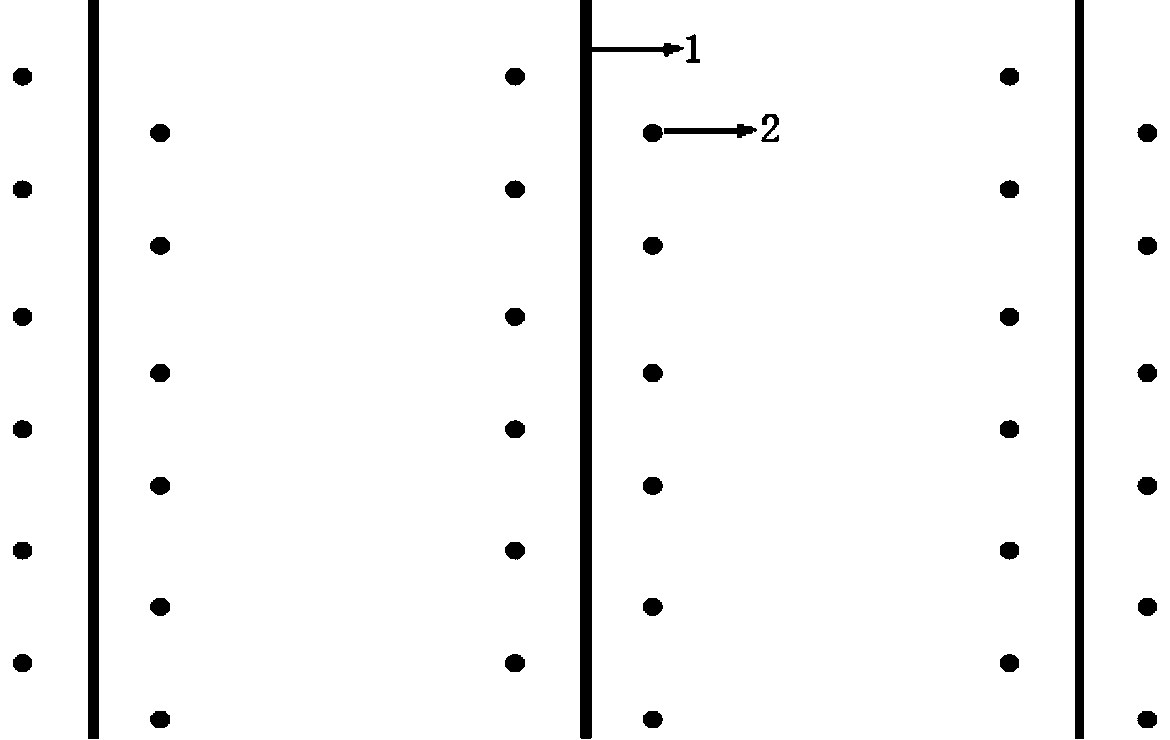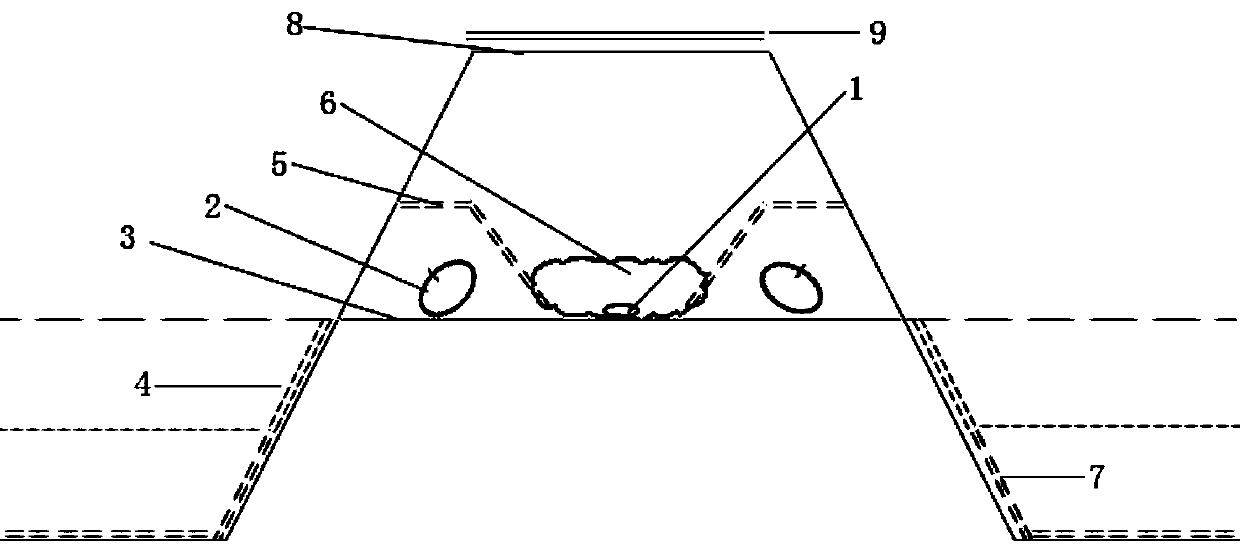Double-row strip planting secondary ridging cultivation method of amorphophallus
A technology of double-row strips and konjac can be applied in root crop cultivation, fertilization method, land preparation method, etc., which can solve the problems of unfavorable excavation, complicated operation procedures, unfavorable ventilation and light transmission, etc., so as to reduce labor input and reduce the incidence of diseases. , The effect of good ventilation and light transmission
- Summary
- Abstract
- Description
- Claims
- Application Information
AI Technical Summary
Problems solved by technology
Method used
Image
Examples
Embodiment 1
[0069] Such as figure 1 , figure 2 Shown, konjac double-row row planting secondary ridge cultivation method comprises the following steps:
[0070] A. Site selection: Select the Hanke A Group of Baihe Village Committee, Pingdian Township, Xinping County, with an altitude of 2080m. The walnut forest is 9-year-old walnut trees with a shading rate of about 50%. Good, sandy loam soil with a soil pH of 6.8, with a planting area of 30 mu;
[0071] B. Soil disinfection: 15 days before planting, remove the sundries in the field, use 40kg of quicklime per mu to spread evenly on the soil surface, and use machinery to deeply plow the 30cm soil layer, rake the finely crushed soil, and fully dry the field;
[0072] C. Seed selection: choose the annual first-generation taro with the same size, full shape, shallow bud nest, and no pest damage. The taro is whole taro, with an average unit weight of 8.8g and a seed amount of 80kg per mu;
[0073] D. Disinfection of planting taro:
[007...
Embodiment 2
[0087] Konjac double-row row planting and second ridge cultivation method comprise the following steps:
[0088] A. Site selection: Select the group below Taala Community, Gucheng Street, Xinping County, and intercropping with corn, with an altitude of 1940m, a plow layer ≥ 30 cm, good drainage, sandy loam soil with a soil pH value of 6.8, and a planting area of 1.2 mu;
[0089] B. Soil disinfection: 20 days before planting, remove the sundries in the field, use 50kg of quicklime per mu to spread evenly on the soil surface, use machinery to deeply plow the 35cm soil layer, rake the finely crushed soil, and fully dry the field;
[0090] C. Seed selection: choose the biennial second-generation taro with the same size, full shape, shallow bud nest, and no pest damage. The average weight of the taro is 117g, and the seed amount per mu is 400kg;
[0091] D. Disinfection of planting taro:
[0092] a. Seed drying: 15-20 days before sowing, put the taro in the sun for 2 days;
[0...
Embodiment 3
[0105] Konjac double-row row planting and second ridge cultivation method comprise the following steps:
[0106] A. Site selection: Select the group below Taala Community, Gucheng Street, Xinping County, with an altitude of 1940m, a cultivated layer ≥ 30 cm, good drainage, sandy loam soil with a soil pH value of 6.8, and a planting area of 2.6 mu;
[0107] B. Soil disinfection: 30 days before planting, remove the sundries in the field, use 50kg of quicklime per mu to spread evenly on the soil surface, and use machinery to deeply plow the 40cm soil layer, rake the finely crushed soil, and fully dry the field;
[0108] C. Seed selection: Choose three-year-old three-generation taro with the same size, full shape, shallow bud nest, and no pest damage. The average unit weight of the taro is 189g, and the seed amount per mu is 550kg;
[0109] D. Disinfection of planting taro:
[0110] a. Seed drying: 15-20 days before sowing, put the taro in the sun for 2 days;
[0111] b. Disin...
PUM
 Login to View More
Login to View More Abstract
Description
Claims
Application Information
 Login to View More
Login to View More - R&D
- Intellectual Property
- Life Sciences
- Materials
- Tech Scout
- Unparalleled Data Quality
- Higher Quality Content
- 60% Fewer Hallucinations
Browse by: Latest US Patents, China's latest patents, Technical Efficacy Thesaurus, Application Domain, Technology Topic, Popular Technical Reports.
© 2025 PatSnap. All rights reserved.Legal|Privacy policy|Modern Slavery Act Transparency Statement|Sitemap|About US| Contact US: help@patsnap.com



